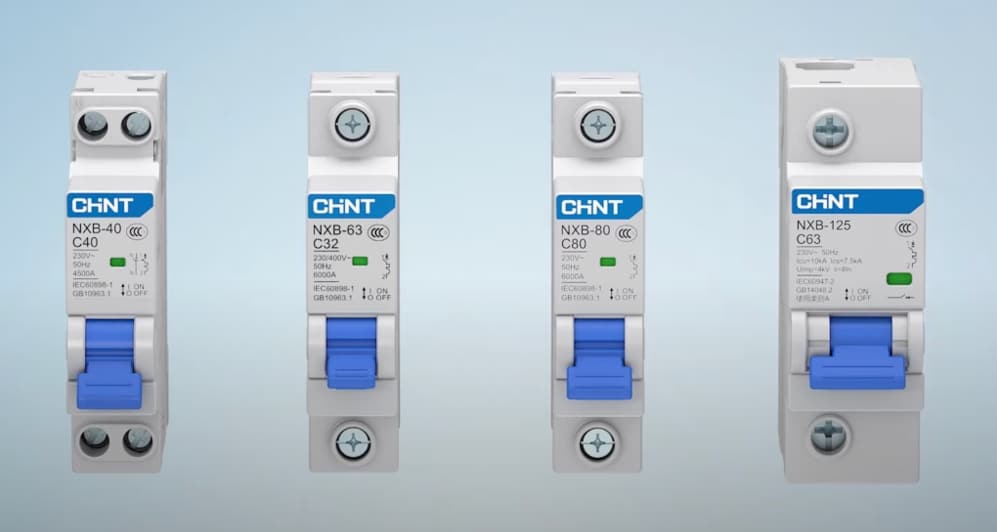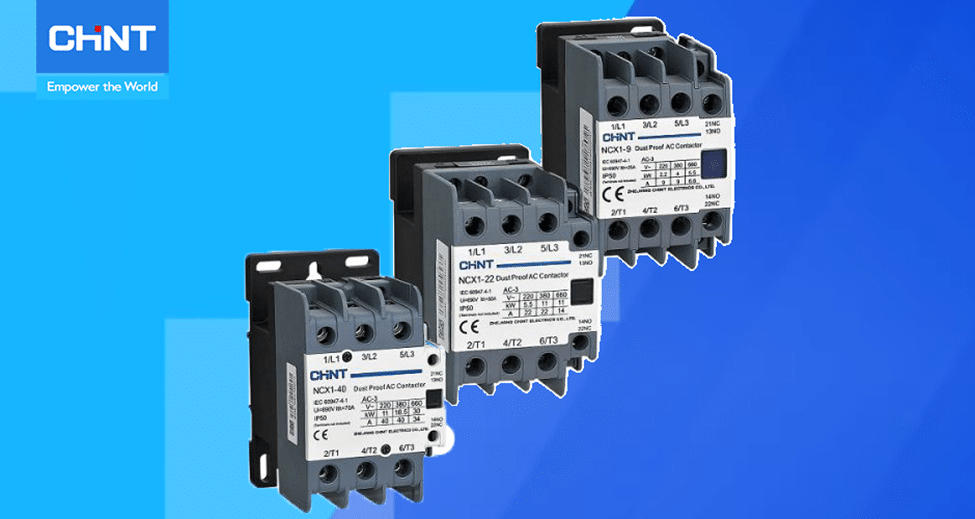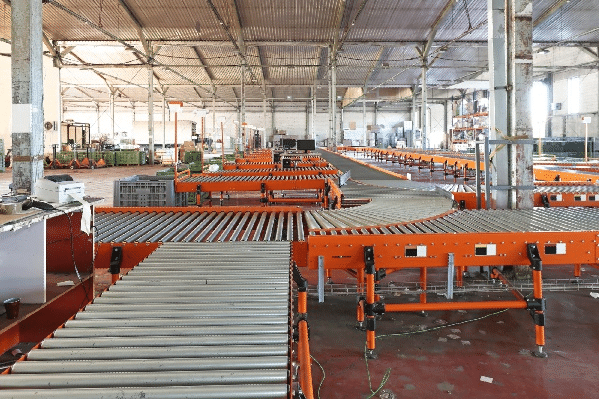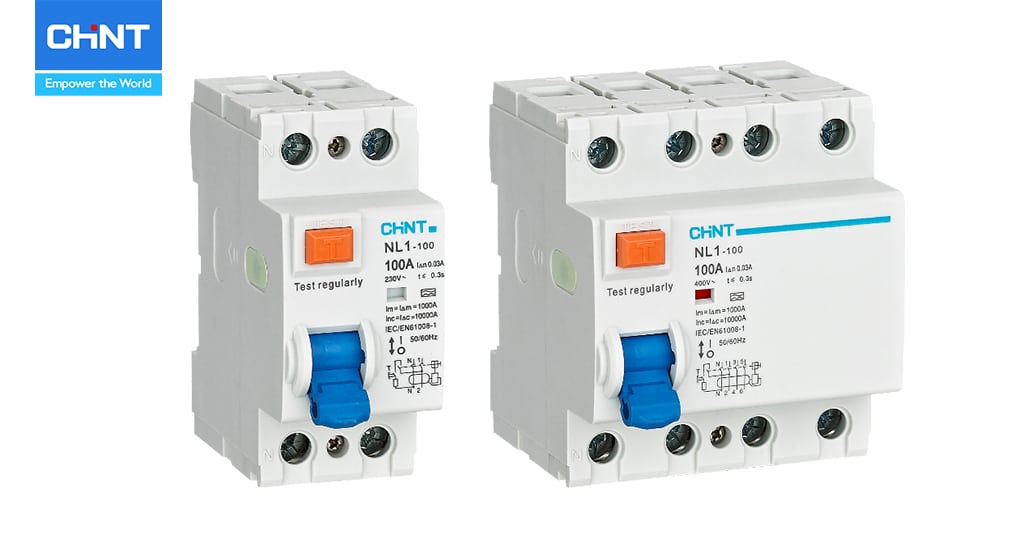Table of Contents
Miniature circuit breakers are small but mighty safety components that protect circuits from damage. They are crucial to safely and efficiently operate machinery and other electrical systems. Here’s a quick overview of how miniature circuit breakers work and their applications.
What is Inside a Miniature Circuit Breaker?
There are two basic components to a miniature circuit breaker. The first is a strip made of steel and copper, called the bimetallic strip. This is the strip that melts and interrupts the circuit in the case of a current overload. The other component is a coil that stops short circuits. The coil will trip in less than one-tenth of a second. The bimetallic strip responds quickly but slower than the coil.
Working Principle of MCB
The bimetallic strip is the chief protective component of an MCB. When an overcurrent flows through an MCB, the strip heats up. When it reaches the point of its rating, it melts and deforms. When that happens, it trips a latch.
That latch separates the contacts, stopping the current. After it trips, the only way to get the current flowing again is to replace the bimetallic strip manually and reset the MCB.
In the case of short circuits wherein there’s a surge in current, the MCB trips a solenoid connected to the latch. Like when the bimetallic strip melts, the tripped latch separates the contacts thereby preventing the flow of current.
This acts almost instantaneously to prevent any further damage. The solenoid generates a magnetic field when a high current passes through it and triggers the latch to release the contacts.

MCB Compared to Other Circuit Breakers
MCBs are great for certain jobs. Sometimes, though, they aren’t strong enough to protect bigger circuits. In commercial and industrial electrical systems, you might need different types of circuit breakers working together.
MCBs vs MCCBs
MCBs have ratings under 100 amperes while MCCBs can go as high as 2500 amperes. MCBs are used for low energy requirements such as residential use. MCCBs, on the other hand, are used for high power requirements for industrial and commercial use.
MCCBs also have a feature where they can be remotely turned off whereas MCBs don’t. That’s useful when a worker notices an issue that could cause damage to a particular circuit.
MCBs vs ELCBs
An earth-leaking circuit breaker detects current leakage, which is a kind of short circuit. An ELCB doesn’t detect overcurrent.
The ELCB reacts when current flows backward along the grounding wire. It’s an added protection against both circuits due to the current leakage and operator electrocution.
MCBs vs RCDs
RCDs (residual current circuit breakers) are designed to trip in as few as 25 milliseconds, four times faster than an MCB. They protect against faults with the ground that often result in fatal electrocution accidents. They generally trip when a ground fault of 25 or more milliamperes occurs.
Also, MCBs only respond to current that would become dangerous to the machinery. That might be dozens, or even hundreds, of times more powerful than what is dangerous for human beings.
Miniature Circuit Breaker: Operation
One of the most common reasons MCBs trip happens is when someone accidentally plugs two things, such as a microwave and desktop grill, into the same circuit and turns them both on at once. We’ve all gone down into the basement to flip the switch back into the “on” position at the junction box or to replace an MCB with a distorted bimetallic strip.
When the strip deforms, the spring that is attached to the latch moves, separating the contacts. When a short circuit happens, the magnetic field inside the coil causes a plunger to move, which then disengages the latch and the contacts. The force involved is called the magneto-motive force or MMF.
You can move a lever on the outside of the MCB to separate the contacts. If you choose to reset the MCB rather than replace it, then you can move the lever in the other direction once you add a new bimetallic strip or reset the spring and plunger.
When the contacts separate, there is a possibility of an electrical arc. The way circuits are built means that the arc is shunted through the runner into a selection of splitters to be safely quenched. Again, if resetting rather than replacing the MCB, once you complete all the reset steps, which include replacing faulty wires in the case of a short circuit, then you can turn the circuit back on because the MCB is ready.
How to Select Proper MCB for Different Loads
The first thing to determine is the load of the circuit that needs protecting. Then, you have to choose an MCB that has a rating equal to or slightly greater than that load. It can’t be too much greater than the load of the circuit because it would never trip. It can’t be too little, either, or it’ll trip all the time.
As an example, many junction boxes in homes are separated into 20-amp circuits. That means that the total amperage that any one of those particular circuits can carry is 20 amps. So, you can have one 20-amp appliance on the circuit, two 10-amp appliances, or an 8-amp and a 12-amp, etc.
Further, let’s say that a particular appliance has a 10-amp load. If the appliance itself has a circuit breaker, then it should be rated at greater than, or equal to, 10 amps and less than 20 amps. Ideally, it should be close to 10 amps. That way, the appliance can protect itself as well as rely on the main breaker at the junction box.
Conclusion
Choosing the right circuit breaker is important for the safety of the electrical circuits. Be sure to pick the right breaker for the right job. At Chint Global, we offer a wide range of miniature circuit breakers to suit various needs.
Whether you need a simple solution for your home or a robust system for your industrial setup, we have the right options for you. Explore our extensive range of circuit breakers and find the ideal solution for your electrical safety needs.
FAQ about Miniature Circuit Breaker
MCBs are categorized based on trip curves, which represent their response time to overcurrent: Type B (quick trip for residential use), Type C (medium trip for commercial applications), and Type D (slow trip for industrial uses with high inrush currents).
While MCBs primarily protect against overcurrent and short circuits, they don’t offer direct protection against electric shocks. For shock protection, one would need a Residual Current Circuit Breaker (RCCB) or Ground Fault Circuit Interrupter (GFCI).
Always ensure the MCB is of the correct rating for your circuit. Periodically inspect for signs of wear or damage. Do not force a tripped MCB to stay on, and always consult professionals for installation or troubleshooting.
Recommend Reading

A Quick Guide to Adjustable Circuit Breaker
Table of Contents Circuit breakers are an integral part of any electrical system. A circuit breaker will trip or stop the flow of electricity if
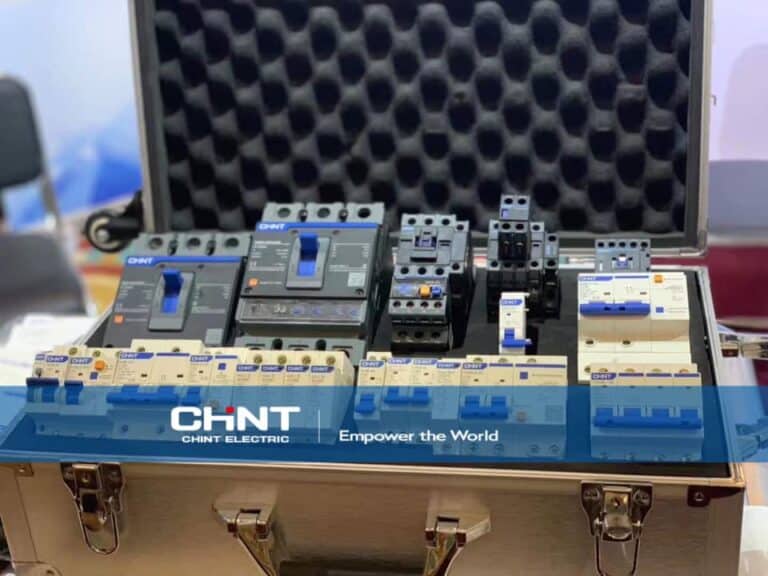
What’s the Difference: Molded Case Circuit Breaker VS Circuit Breaker
Table of Contents Circuit breakers are safety devices that protect electrical systems from overloads and short circuits. Molded Case Circuit Breakers (MCCB) and conventional breakers

